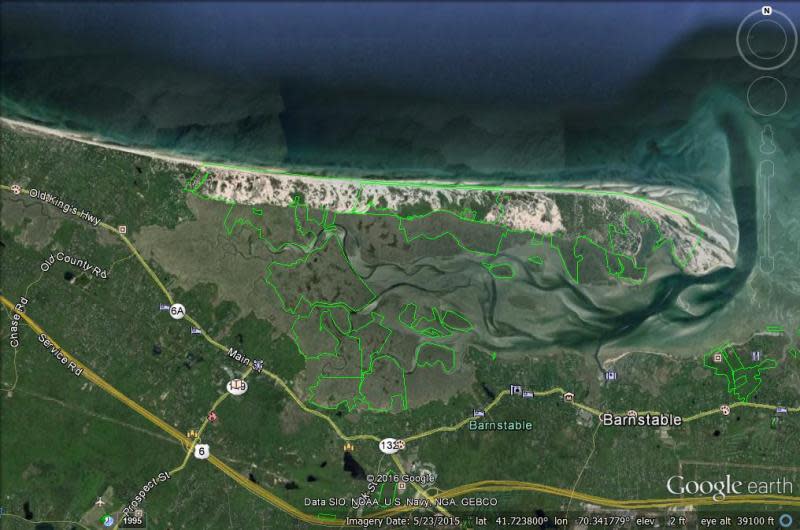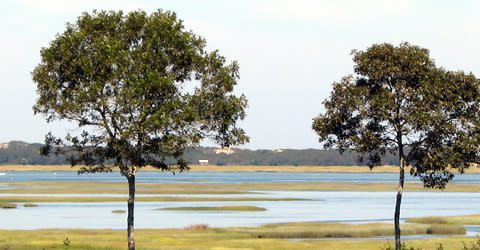
Great Marsh, Barnstable, MA (Cape Cod)
About
GENERAL INFORMATION
Criteria:
Listed on more than one “valuable wetland” list by natural resource agencies or nongovernment organizations.
Protects biological diverse wetland flora, fauna and/or their habitat
Supports significant numbers of wetland-dependent fauna, such as water birds or fish
Great Marsh is an integral part of a barrier spit/embayment complex called Sandy Neck. It is recognized by Massachusetts as an Area of Critical Environmental Concern (ACEC) and as providing "Habitat of Potential Regional or Statewide Importance." This is the study site in which Alfred Redfield proposed how a salt marsh develops by accretion of sediment in his seminal wetlands paper, "Development of a New England Salt Marsh (Redfield 1972)." Thus, this wetland has both biological and historical significance to wetland scientists.
Exemplary Ecosystem Services:
- Aesthetic/cultural heritage value/ provisioning
- Recreation (birdwatching, ecotourism)
- Storm abatement
- Carbon storage
- Water quality improvement
- Education
CONSERVATION STATUS AND THREATS
Public Access: Yes
Current and Future Threats: Climate change, if marsh is starved of sediment, marsh may not accrete sufficiently to keep pace with sea level rise (SLR).
Conservation status: State/Province/Regional Protection
Adjacent Land Use: Upland Shrubland
Approximate natural buffer width:
> 100 ft
Other information:
Spit on north side is sparsely populated with summer cottages; 4-wheel drive required to access. South side of marsh also has homes.
The town of Barnstable and Mass Audubon also hold protected portions.
The marsh complex is very large and is best accessed by boat or by hiking along Sandy Neck.
ECOLOGY
Approximate size: 3,700+ acres
General wetland characterization:
- Coastal Salt Flat
- Coastal Salt Meadow
- Coastal Regularly Flooded Salt Marsh
- Coastal Saline Sound/Bay
Adjacent Water Bod(ies):
Tidal Systems
Name of body of water: Cape Cod Bay
Surficial Geology:
Great Marsh is part of Cape Cod, formed at a terminal moraine of the Wisconsin Ice Sheet. It formed when sea level rose reaching glacial deposits and sand spits formed along the shore, which accreted from sediment carried by longshore currents. Great Marsh formed behind sand on the north shore of Cape Cod and deposited peat as it kept pace with sea level change and expanded. Old marsh is underlain by peat, while more recent marsh is forming over sand and between and around erratic boulders.
Soils:
Ipswich peat
FLORA AND FAUNA
Dominant flora: Spartina alterniflora, S. patens, Distichlis spicatum, Salicornia spp., Prunus maritima, Rosa rugosa
Unique flora: None in salt marsh proper, none in adjacent dunes.
Dominant fauna: Osprey, fidler crab, green crab, blue crab, various marsh birds
Rare fauna: Malaclemys terrapin (diamondback terrapin)
ADDITIONAL INFORMATION
Development of a New England Salt Marsh
Ontogeny of a Salt Marsh Estuary
CONTACT INFORMATION
Applicant First Name: Rick
Applicant Last Name: Rheinhardt
Applicant E-mail Address: rheinhardt@gmail.com
Images


